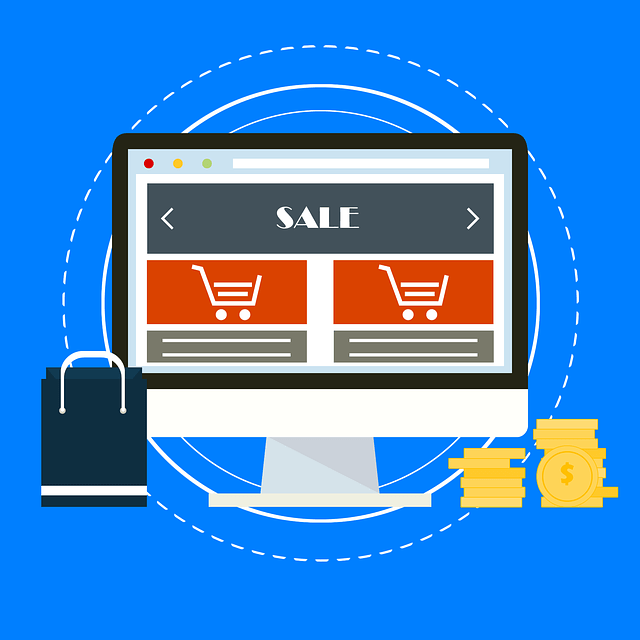Running a self-hosted e-commerce store can be profitable, but there are a number of factors that need to be considered in order to make it successful. In order to maximize your chances for success, it is important to do your research and have a clear idea of what you need to do before starting an online store.
Table of Contents
1. Choose the right products to sell
One of the most important factors in running a successful e-commerce store is choosing the right products to sell. You need to make sure that you are offering products that people actually want to buy and that there is a demand for.
Do your research and figure out what kinds of products are selling well online. You can use tools like Google Trends to see what kinds of products are being searched for more often. You can also look at Amazon Best Sellers lists to get an idea of what kinds of products are selling well.
2. Target the right market
Not everyone will be interested in your products, so you need to ensure that you are targeting the right people. It is essential to know your target market and what they are looking for before creating product listings and marketing your store.
This research will help you attract customers and sell more products. Also, it will reduce your campaigning costs on social media, targeted ads, and other marketing strategies to reach your target market.
3. Have a sound business strategy
Before starting an e-commerce store, it is important to have a clear idea of what you want to achieve and how you plan to achieve it. This means establishing a clear business strategy and setting realistic goals for your store.
Business strategy often includes things like knowing your costs, setting up a system for fulfillment, and having a plan for marketing and advertising.
Make sure that you take the time to put together a solid business plan before starting your e-commerce store. This will help you make sure that you are on the right track from the start.
4. Set up your store’s design and layout
A well-designed and user-friendly layout is another important factor in running a successful e-commerce store. Your store’s design should be clean and organized, making it easy for visitors to find what they are looking for.
Make sure that your store is designed to make it easy for customers to navigate and find the products they are interested in. Use high-quality product photos and clear descriptions to make it easy for visitors to understand what you are selling.

5. Make your site safe and Secure
Make sure your site is secure. This means you must get an SSL certificate and ensure your payment processor is PCI-compliant. If you take these precautions, you’ll give your customers the peace of mind they need to purchase from your store. And that can make all the difference regarding whether or not your business is successful.
6. Choose good hosting & domain name
Choose a reliable hosting provider. Your host should offer good uptime and support if you encounter any issues. A good host will also provide features like unlimited bandwidth and storage space and a shopping cart and payment gateway integration.
Best Web Hosting Services:
| Hosting Service | Website URL |
|---|---|
| Bluehost | www.bluehost.com |
| SiteGround | www.siteground.com |
| A2 Hosting | www.a2hosting.com |
| HostGator | www.hostgator.com |
| InMotion Hosting | www.inmotionhosting.com |
| DreamHost | www.dreamhost.com |
| GreenGeeks | www.greengeeks.com |
Another important consideration is your domain name. Your domain name should be easy to remember and relevant to your product or service. Once you have chosen a domain name, you must set up web hosting, giving you a platform to build your website.
Best Domain Name Services:
| Domain Name Service | Website URL |
|---|---|
| Namecheap | www.namecheap.com |
| GoDaddy | www.godaddy.com |
| Dynadot | www.dynadot.com |
| Domain.com | www.domain.com |
| Hover | www.hover.com |
| Google Domains | domains.google |
| Bluehost | www.bluehost.com |
7. Make sure your store is mobile responsive
As the world increasingly turns to mobile devices for information and purchases, it is more important than ever that your e-commerce store is mobile-responsive. A mobile responsive website will adjust its layout and content to fit the user’s device best, whether a phone, tablet, or laptop.
In 2018, 52.2 per cent of all website traffic worldwide was generated through mobile phones, which continues to grow yearly.
If you want your store to remain competitive and accessible to the widest possible audience, you must ensure it is mobile-responsive. Luckily, there are a few simple ways to ensure your store is responsive.
- Avoid using Flash or other technologies that are not compatible with mobile devices.
- Use HTML5 and CSS3 code which are standard across all devices.
8. Offer great customer service
Finally, one of the most important things to remember when running an e-commerce store is to offer great customer service. This includes responding to customer inquiries quickly, offering free shipping or returns, and professionally handling customer complaints.
A big part of running a successful e-commerce store is focusing on customer retention. This means creating repeat customers who are happy with their purchases and will return to your store again.
There are a number of ways to encourage customer loyalty, such as offering discounts, running promotions, and providing excellent customer service. Make sure that you are focusing on retaining your existing customers.
9. Create effective product listings
To sell products online, you need to create effective product listings. Your listings should be well-written and include high-quality photos. Product photography is essential for driving conversions, and high-resolution photos are critical for giving customers a clear idea of what they’re buying. They should also be optimized for search engines so potential customers can easily find your products.
Use keyword-rich titles and descriptions, and use relevant keywords throughout your listing. Use ALT tags for your product photos to help improve your search engine optimization.

10. Well-priced and competitive products
Product pricing is one of the most important aspects of running a successful e-commerce store. If your prices are too high, you’ll miss out on potential customers. If your prices are too low, you might not make enough profit to sustain your business. Finding the right price point for your products is essential to profitability.
To ensure that your prices are competitive, do some market research. See what similar products are selling for and price your products accordingly. It’s also important to keep an eye on your competitor’s pricing so you can adjust yours as needed.
Pricing isn’t just about finding the right number – it’s also about how you present that number to customers. Be sure to use clear and concise language when listing prices on your website and in any marketing materials. Use numbers that are easy to understand and avoid any confusing pricing structures.
11. Offer a good mix of products
To be successful, your e-commerce store needs to offer a good mix of products that appeal to a wide range of customers. This way, you can attract more visitors to your site and convert more of them into paying customers.
One way to achieve this is by offering a variety of product categories. For example, if you sell clothes, you could offer different styles for men, women, and children. You could also offer a mix of casual and formal wear.
Another way to appeal to a wider range of customers is by offering products at different price points. This way, you can cater to shoppers with different budgets. For example, you could sell some items for under 1000 and others for over 10000. Finally, it’s important to keep your inventory fresh by regularly adding new products.
12. Promote your store
Once you have set up your e-commerce store, you need to start promoting it. There are a number of ways to do this, such as through social media, email marketing, and pay-per-click advertising, as well as offline methods like print ads, direct mail, and tradeshows.
Make sure that you are promoting your store in a way that will reach your target market. Use effective marketing and advertising strategies to drive traffic to your store. It is important to invest time and money in marketing your e-commerce store.
The best ways to get organic traffic include things like SEO-driven blogging, guest posting, and social media marketing. By writing blog posts that are helpful and full of keywords, you can get free traffic from search engines that will help your business’s bottom line.
Before you start writing, take some time to plan out your content and map out a publishing schedule. This will help ensure that your blog posts are well-organized and on topic.
In order to write effective SEO-driven content, you need to do your keyword research and understand what people are searching for in relation to your products or services. Use tools like Google AdWords Keyword Planner to find relevant keywords that you can target in your blog posts.
13. Help Reporters Out (HARO)
HARO is a great way to connect with reporters who are looking for sources for their stories. By signing up for HARO, you can get your business featured in major publications without spending a lot of money on advertising.
Here are some tips for making the most of HARO:
- Be responsive: When you get an email from HARO, be sure to respond as quickly as possible. The faster you reply, the more likely it is that the reporter will use you as a source.
- Keep it short and sweet: Reporters are busy people, so make sure your responses are concise and to the point. They’ll appreciate your brevity.
- Offer value: In your response, offer something valuable that the reporter can use in their story. If you don t know what to say, consider offering an expert source or a case study.
- Be timely If a reporter sends you a query asking if they can use your response in their story, be sure to respond quickly.
14. Offer incentives
One of the best ways to encourage people to buy from your e-commerce store is to offer incentives. This could include things like free shipping, discounts, or coupons.

Offering incentives is a great way to encourage people to buy from your store. Make sure that you are offering something that will appeal to your target market.
By following these tips, you can increase your chances of running a successful and profitable e-commerce store. Do your research, have a solid business plan, and focus on providing a great customer experience. If you do these things, you’ll be well on your way to success.
15. Personalized outreach
Outreach is a process of connecting with individuals or businesses for the purpose of building relationships and growing your customer base. Personalized outreach is a way of reaching out to potential customers that involves making a connection on a personal level. This can be done by sending a handwritten note, picking up the phone to call them, or meeting them in person.
Personalized outreach is an effective way to build relationships with potential customers because it shows that you are willing to go the extra mile to connect with them. It also allows you to build trust and rapport with potential customers, which can lead to increased sales.
If you are running an e-commerce store, there are several ways you can incorporate personalized outreach into your marketing strategy. For example, you could send handwritten notes to customers after they make a purchase, or include a handwritten note with their order.
16. Order packaging and determine shipping/storage options
When you’re running a self-hosted e-commerce store, it’s important to make sure that your products are well-packaged and shipped securely. Here are some tips to help you do just that:
- Choose the right packaging for your products. Depending on the type of product you’re selling, you’ll need to select the appropriate packaging. For example, if you’re selling fragile items, you’ll need to make sure they’re properly cushioned so they don’t break during shipping.
- Determine how you’re going to store your products. If you have a limited amount of space, you’ll need to be strategic about how you store your products. For example, if you have a small warehouse, you may want to consider using vertical storage racks to maximize space.
- Consider using shipping storage containers. If you’re storing your products in a warehouse, consider using shipping containers to help protect them. Since the containers are made of sturdy material, they’ll be able to withstand any damage that occurs during storage.
- Use quality storage equipment. If you have a limited amount of space to store your products, you may want to consider buying storage equipment that offers plenty of space. For example, if you’re storing your products in a warehouse, use storage racks that offer plenty of shelf space.
17. Build Buyer Trust with Product Reviews
As an eCommerce business owner, it’s important to build trust with potential buyers – and one way to do that is through product reviews. By featuring reviews prominently on your product pages (and making it easy for customers to leave their own reviews), you can show potential buyers that your products are high-quality and worth their investment.
Of course, not all reviews will be glowing – but even negative reviews can be turned into positive by showing that you’re responsive to customer feedback and constantly working to improve your products. In fact, studies have shown that customers are more likely to trust a business with some negative reviews than one with no reviews at all.
So if you’re not already using product reviews as a way to build buyer trust, now is the time to start!
18. Manage your finances effectively
One of the most important things to remember when running an e-commerce store is to manage your finances effectively. This includes things like creating a budget and tracking your expenses and sales.
Make sure that you are keeping track of your finances so that you can identify any areas where you may be losing money. This will help you to make changes in order to improve your profitability.
19. Stay up to date with industry trends
Make sure that you are staying up to date with industry trends so that you can keep your store relevant and appealing to your target market. This includes things like new product releases, changes in consumer behavior, and new marketing strategies.
It’s important to be able to adapt in order to stay ahead of the competition. Pay attention to your customers and what they want, and don’t be afraid to experiment with new ideas. Making small changes on a regular basis can help you keep your business model up-to-date and profitable.
By staying up to date with industry trends, you can make sure that your store is always ahead of the curve. This will help you attract more customers and make more sales.
20. Partner with other brands
As the e-commerce market continues to grow, partnering with other brands can be a great way to increase profits for your self-hosted store. By teaming up with complementary brands, you can reach a wider audience and tap into new markets. Make sure you partner with brands that share your values and have a similar target audience. You should also consider the brand’s size and reputation.
Both brands should benefit from the partnership in order for it to be successful. Be clear about what each brand is offering and what you expect in return. Once you’ve partnered with another brand, make sure to promote the relationship to your audiences.
21. Track analytics and iterate
It’s important to track analytics and use that data to inform your decisions. Without analytics, it’s nearly impossible to tell what’s working and what isn’t.
There are a few key things you should be tracking: page views, unique visitors, time on site, conversion rate, and bounce rate. By tracking these metrics, you’ll be able to see which areas of your store are performing well and which need improvement.
Make sure to track your progress over time so you can see how your changes are impacting your business. Iterate based on what you learn from your analytics and always be testing new things to see what works best for your store.
22. Keep your inventory well-stocked
In order to meet customer demand, it is important to keep your inventory well-stocked. This may seem like an obvious statement, but it is often overlooked by e-commerce store owners. By keeping your inventory levels high, you will ensure that you always have the products your customers want in stock and can avoid any costly backorders.
There are a few things you can do to make sure your inventory is always well-stocked. Track your sales data carefully and use it to forecast future demand. This will allow you to order the correct quantities of each product and avoid over or under-stocking your shelves.
Work with suppliers who can provide you with reliable lead times so that you can plan for restocks accordingly. Also, implement a just-in-time inventory management system to minimize the amount of money tied up in inventory.
23. Be prepared for seasonality
E-commerce stores need to be prepared for seasonality. This includes things like stocking up on seasonal items, running promotions, and offering discounts.
Make sure that you are prepared for the busy seasons so that you can take advantage of the increased traffic and sales. By being prepared, you can make sure that your store is always ready for whatever comes your way.
24. Have a long-term vision
It is important to have a long-term vision when running an e-commerce store. This includes things like planning for growth, expanding your product offerings, and diversifying your income streams.
E-commerce business is a long-term game. The longer you play in the market, the more will be your chances to succeed.
Ecom Weaver
By having a long-term vision, you can make sure that your store is always moving forward. This will help you to stay ahead of the competition and continue to grow your business.
Conclusion
By following these tips, you can increase your chances of success when running a self-hosted e-commerce store. Do your research, have a solid business plan, focus on providing a great customer experience, use effective marketing and SEO techniques to drive traffic to your store, and stay up to date with industry trends.
Also, don’t forget to celebrate successes by sharing them with your team and customers, and learn from them by reviewing what went wrong and how it can be improved. With the right approach, you can be successful in selling online.







